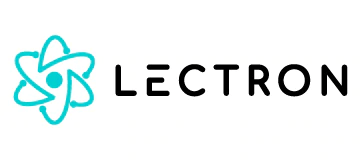Cheapest Tesla chargers with NACS connector now available at Best Buy courtesy of Lectron
Original Post Date: October 28, 2023
Source: CNET
Read the full article here
The fossil fuel conglomerate will be the first to acquire chargers directly from Tesla for its third-party network. What does that mean for EV drivers?

BP's alternative fuels wing is expanding its EV charging presence in the US with the purchase of Tesla DC fast-charging hardware.
Petroleum giant turned clean energy dabbler BP announced this week that it will be acquiring $100 million worth of Tesla DC fast charging hardware featuring the North American Charging Standard (NACS) connector for deployment within its BP Pulse EV charging network. The announcement, according to BP, signals the first time Tesla first-party hardware will be purchased and deployed on a third-party charging network and could make BP a much more valuable player in the EV charging landscape of the future.
BP Pulse -- the oil company's clean and alternative energy wing -- currently operates around 28 public DC fast charging locations in the US with around two to three CCS and ChaDeMo connections each. (That's according to BP's own location finder, which doesn't include its commercial-scale or B2B deployments.) That's small potatoes relative to the current EV charging giants Electrify America's 3,500 DC fast charging ports, EVgo's 2,600 ports, Chargepoint at around 2,000 and, of course, Tesla itself, with over 20,000 DC fast charging ports nationwide.
I've spent over a decade evaluating EVs and interviewing automotive and charging hardware experts and engineers, but as this is the first time a third party has deployed Tesla hardware, I don't have an accurate estimate as to how many charging posts BP Pulse's $100 mil gets. The California Energy Commission's estimate of around $104,000 per four-charger installation gets us an estimate of around 1,000 chargers, but such back-of-a-napkin math doesn't account for differing per-state costs/incentives or the economy of scale for such a large deployment. What it does let us know is how serious this initial push from BP Pulse could be.
BP Pulse maintains a much larger European presence, where the lion's share of its 27,000 Level 2 and DCFC charge points can be found, but this investment into NACS hardware, which really only makes sense here in North America, hints that ol' British Petroleum is gearing up for a much larger EV charging footprint in the US. Indeed, BP Pulse goes on to state that it plans to "invest up to $1 billion in EV charging across the US by 2030."
(Of course, the oil and gas conglomerate plans to continue to spend between $14 billion and $18 billion annually on fossil fuels over the same period.)
What this means for Tesla and non-Tesla drivers
The news comes as part of a wave of automakers boldly announcing the switch from the current CCS charging port to Tesla's NACS port for future vehicles arriving around 2025. But before you chuck your beloved CCS-equipped EV into the trash, know that BP Pulse's Tesla-sourced stations will feature Tesla's "Magic Dock" integrated NACS to CCS adapter for ultra-fast charging at up to 250 kW and with almost any EV on the road today.
Much hullabaloo has been made about the NACS switch, but the reality is that Tesla's adoption of CCS-compatible protocols and charging standards behind its differently shaped port (a move strongly encouraged by regulators in the EU) is what has allowed other automakers to make the switch. In fact, every automaker that has announced future NACS-equipped EVs has also stated that their current CCS fleet will also be compatible with a relatively inexpensive adapter, which should begin arriving from dealerships, Tesla and third-parties such as Lectron next year.

More charging infrastructure and more options for fast charging, particularly near highways, is a good thing for EV drivers regardless of what connection their car uses. Gas stations, ironically, are in many ways the perfect place for EV chargers. They're usually conveniently located in high-traffic areas, often right off the interstates. They also typically have amenities such as food, shopping, bathrooms, tire inflation stations, window cleaners and car washes. Most importantly, gas stations are usually staffed, which can make reporting and servicing broken hardware much easier and improve security. Having found myself charging for half an hour in a dark, empty lot in the middle of nowhere on more than a few occasions, the prospect of a well-lit, staffed charging station with snacks sounds like an oasis -- even if I have to share it with my petroleum-powered neighbors.
The BP Pulse stations are expected to end up at BP, Amoco, AMPM and other BP-owned gas stations, travel hubs and "Gigahub" large-scale charging sites as early as 2024 with the first sites popping up in Houston, Phoenix, Los Angeles, Chicago and Washington, DC. Users will be able to find their nearest station in the BP Pulse app as well as Tesla vehicle UI and apps.
Best Lectron Products for Multi-Network Charging
Trusted by 1M+ drivers; featured in


